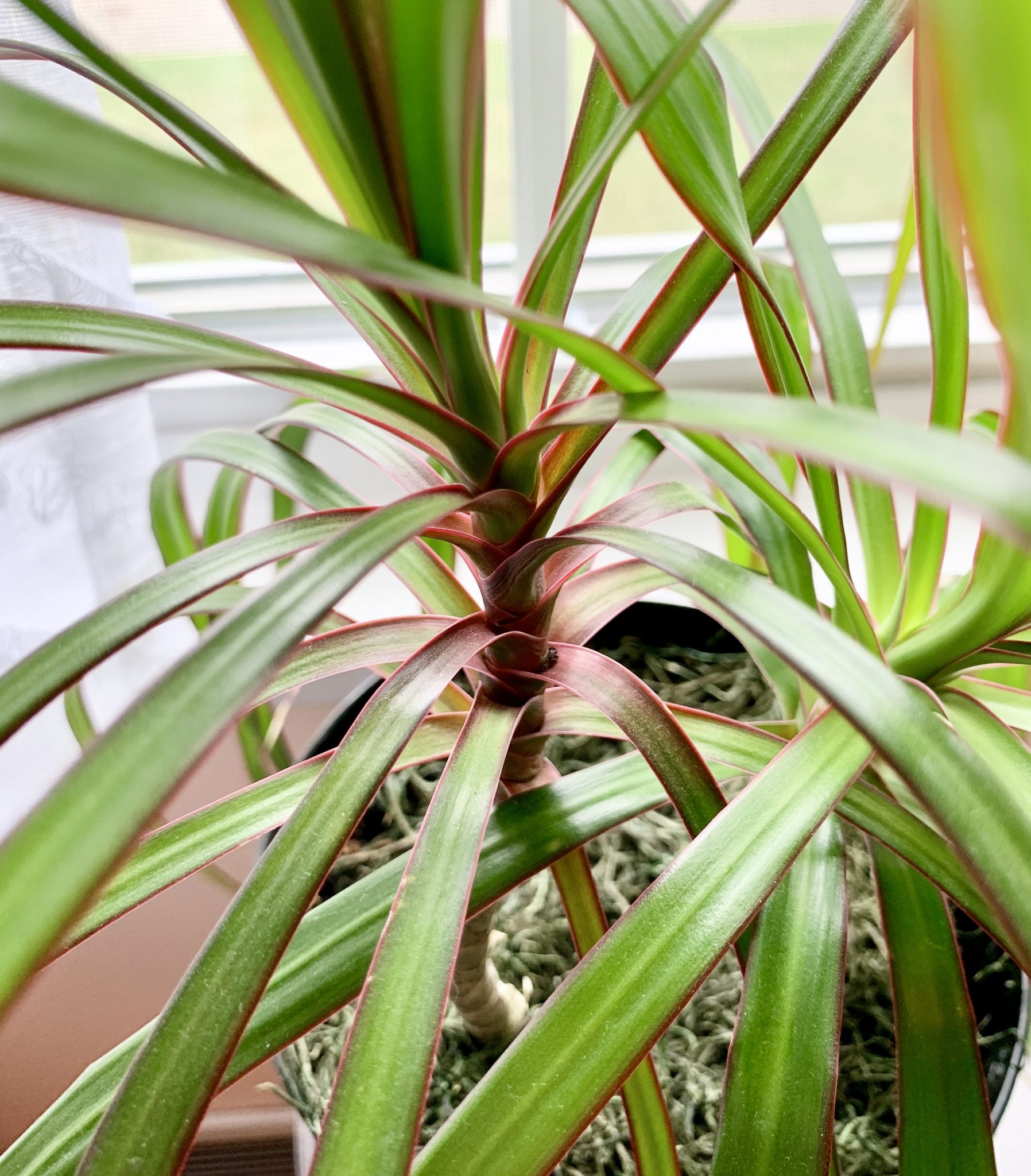
Source sproutsandstems.com
Welcome to our comprehensive guide on dracaena tree care. Whether you’re a seasoned green thumb or a beginner looking to add some tropical vibes to your home, this article will provide you with all the information you need to keep your dracaena trees thriving.
Dracaena trees are known for their lush foliage and ability to purify indoor air, making them popular houseplants. However, like any other plant, they require proper care to ensure their healthy growth and longevity. In the following sections, we’ll explore various aspects of dracaena tree care, including watering, light requirements, pruning, and common issues you may encounter.
1. Choosing the Right Location
Providing Adequate Lighting
Dracaena trees thrive in bright, indirect light. Ideally, place your dracaena tree near a north-facing window or a few feet away from an east- or west-facing window. This allows the plant to receive enough light without direct exposure to harsh sunlight, which can scorch the leaves.
If natural light is limited in your space, you can supplement it with fluorescent grow lights placed a foot or two above the plant. Keep in mind that without sufficient light, the foliage may become less vibrant and the plant growth may slow down.
Temperature and Humidity Considerations
Dracaena trees prefer temperatures between 60°F (15°C) and 75°F (24°C). Avoid placing them near drafts or sudden temperature changes, such as next to air conditioning vents or doorways.
As tropical plants, dracaena trees appreciate humidity levels of around 40-50%. To increase humidity, you can use a humidifier or place the pot on a tray filled with pebbles and water. Just make sure the bottom of the pot doesn’t sit in water to prevent root rot.
2. Watering and Feeding
Determining the Watering Schedule
The watering needs of dracaena trees vary depending on factors such as light, temperature, and humidity. Before watering, always check the top inch of soil – if it feels dry, it’s time to water.
When watering, pour water evenly over the soil until it drains out of the bottom drainage holes. Avoid letting the roots sit in standing water as it can lead to root rot. Remember, it’s better to underwater than overwater a dracaena tree.
Choosing the Right Fertilizer
Dracaena trees typically benefit from a balanced, water-soluble fertilizer with a 20-20-20 NPK ratio (nitrogen, phosphorus, and potassium). Dilute the fertilizer to half-strength and feed your dracaena tree once a month during the growing season (spring and summer).
Always follow the package instructions for the specific fertilizer brand you’re using. Over-fertilizing can lead to fertilizer burn and damage the plant’s roots.
3. Pruning and Maintenance
Removing Yellow or Browning Leaves
Yellow or browning leaves in a dracaena tree are often a sign of overwatering, underwatering, or improper lighting. If you notice such leaves, carefully trim them using clean pruning shears. This not only improves the plant’s appearance but also encourages healthy new growth.
Be sure to disinfect the pruning shears before and after each use to prevent the spread of diseases.
Managing Dracaena Height
If your dracaena tree grows too tall and you desire a more compact shape, you can trim the top portion of the stem. This encourages branching and results in a bushier appearance. Ensure you make a clean cut just above a node or leaf base.
However, avoid drastic pruning that removes a significant portion of the foliage, as it may cause stress to the plant.
Table: Dracaena Tree Care Breakdown
| Aspect | Description |
|---|---|
| Lighting | Requires bright, indirect light |
| Temperature | Optimal temperature range: 60°F-75°F |
| Humidity | Prefers humidity levels of 40-50% |
| Watering | Check soil moisture and water when top inch feels dry |
| Fertilizing | Use a balanced, water-soluble fertilizer at half-strength once a month |
| Pruning | Trim yellow/browning leaves and prune for desired height |
Frequently Asked Questions about Dracaena Tree Care
1. Can I keep a dracaena tree near a heating vent or radiator?
Avoid placing your dracaena tree near heating vents or radiators, as they can cause the plant to become too dry or experience sudden temperature fluctuations.
2. How often should I repot my dracaena tree?
Dracaena trees generally require repotting every 2-3 years or when the root system becomes congested. Choose a pot that’s one size larger than the current one, using well-draining soil.
3. Why are the tips of my dracaena’s leaves turning brown?
Brown leaf tips are often caused by dry air and lack of humidity. Try increasing the overall humidity around the plant and ensure you’re watering correctly.
4. Can I propagate my dracaena tree?
Yes, dracaena trees can be propagated through stem cuttings. Take a stem cutting with several leaves and place it in a pot with well-draining soil. Keep the soil moist until new roots develop.
5. Are dracaena trees safe for pets?
While dracaena trees are generally non-toxic, they can be mildly toxic to cats and dogs if ingested in large quantities. It’s best to keep the plants out of reach of pets.
Conclusion
In conclusion, taking care of your dracaena trees involves providing them with suitable lighting, maintaining proper temperature and humidity levels, watering carefully, and feeding judiciously. Regular pruning and maintenance will help keep the plants healthy and visually appealing. By following these tips and guidelines, you’ll be able to enjoy the beauty and benefits of dracaena trees for years to come.